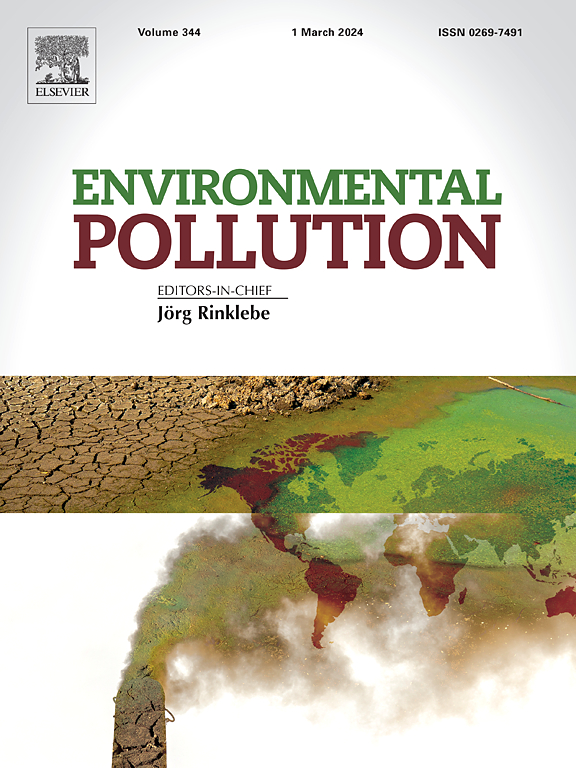防护口罩降低了医院污水处理厂工人感染耐抗生素大肠杆菌的胃肠道风险:定量微生物风险评估
IF 7.6
2区 环境科学与生态学
Q1 ENVIRONMENTAL SCIENCES
引用次数: 0
摘要
本文章由计算机程序翻译,如有差异,请以英文原文为准。

Protective Masks Reduced Gastrointestinal Risks of Antibiotic-Resistant E. coli for Hospital Wastewater Treatment Plant Workers: A Quantitative Microbial Risk Assessment
Antibiotic-resistant bacteria (ARB) in hospital wastewater present significant but under-researched risks for wastewater treatment plant (WWTP) workers. This study evaluated annual infection risks (Py) from exposure to ESBL-producing Escherichia coli (ESBL E. coli) and the effectiveness of protective masks. Wastewater samples from 25 hospitals in Thailand revealed 88% of untreated samples were positive for ESBL E. coli (6.25 × 102 to 1.83 × 107 CFU/100 mL, mean 2.22 × 106), while 40% of treated samples tested positive (1.00 × 102 to 1.97 × 105 CFU/100 mL, mean 2.45 × 104). Using quantitative microbial risk assessment and data from 917 workers, risks were calculated under three scenarios: non-resistant, antibiotic-resistant, and highly virulent E. coli. Ingestion of aerosols and droplets posed a higher infection risk than hand-to-mouth contact, with Py often exceeding the U.S. EPA benchmark of 10-4 per person per year. Mask use, particularly surgical and FFP2 masks, significantly reduced risks, bringing treated wastewater exposure below the benchmark. However, highly virulent E. coli risks remained high across all mask types. These findings highlight the need for effective protective measures and disinfection strategies to safeguard WWTP workers and mitigate ARB dissemination, protecting public health and environmental safety.
求助全文
通过发布文献求助,成功后即可免费获取论文全文。
去求助
来源期刊

Environmental Pollution
环境科学-环境科学
CiteScore
16.00
自引率
6.70%
发文量
2082
审稿时长
2.9 months
期刊介绍:
Environmental Pollution is an international peer-reviewed journal that publishes high-quality research papers and review articles covering all aspects of environmental pollution and its impacts on ecosystems and human health.
Subject areas include, but are not limited to:
• Sources and occurrences of pollutants that are clearly defined and measured in environmental compartments, food and food-related items, and human bodies;
• Interlinks between contaminant exposure and biological, ecological, and human health effects, including those of climate change;
• Contaminants of emerging concerns (including but not limited to antibiotic resistant microorganisms or genes, microplastics/nanoplastics, electronic wastes, light, and noise) and/or their biological, ecological, or human health effects;
• Laboratory and field studies on the remediation/mitigation of environmental pollution via new techniques and with clear links to biological, ecological, or human health effects;
• Modeling of pollution processes, patterns, or trends that is of clear environmental and/or human health interest;
• New techniques that measure and examine environmental occurrences, transport, behavior, and effects of pollutants within the environment or the laboratory, provided that they can be clearly used to address problems within regional or global environmental compartments.
 求助内容:
求助内容: 应助结果提醒方式:
应助结果提醒方式:


